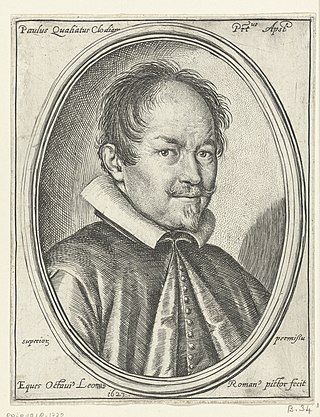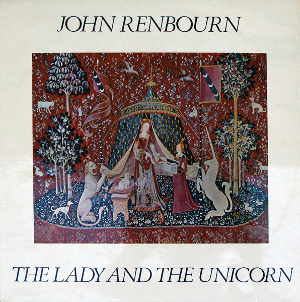
Claudio Giovanni Antonio Monteverdi was an Italian composer, choirmaster and string player. A composer of both secular and sacred music, and a pioneer in the development of opera, he is considered a crucial transitional figure between the Renaissance and Baroque periods of music history.

Barbara Strozzi was an Italian composer and singer of the Baroque Period. During her lifetime, Strozzi published eight volumes of her own music, and had more secular music in print than any other composer of the era. This was achieved without any support from the Church and with no consistent patronage from the nobility.
Dorian mode or Doric mode can refer to three very different but interrelated subjects: one of the Ancient Greek harmoniai ; one of the medieval musical modes; or—most commonly—one of the modern modal diatonic scales, corresponding to the piano keyboard's white notes from D to D, or any transposition of itself.

Costanzo Festa was an Italian composer of the Renaissance. While he is best known for his madrigals, he also wrote sacred vocal music. He was the first native Italian polyphonist of international renown, and with Philippe Verdelot, one of the first to write madrigals, in the infancy of that most popular of all sixteenth-century Italian musical forms.

The intermedio, in the Italian Renaissance, was a theatrical performance or spectacle with music and often dance, which was performed between the acts of a play to celebrate special occasions in Italian courts. It was one of the important predecessors to opera, and an influence on other forms like the English court masque. Weddings in ruling families and similar state occasions were the usual occasion for the most lavish intermedi, in cities such as Florence and Ferrara. Some of the best documentation of intermedi comes from weddings of the House of Medici, in particular the 1589 Medici wedding, which featured what was undoubtedly both the most spectacular set of intermedi, and the best known, thanks to no fewer than 18 contemporary published festival books and sets of prints that were financed by the Grand Duke.

Paolo Quagliati was an Italian composer of the early Baroque era and a member of the Roman School of composers. He was a transitional figure between the late Renaissance style and the earliest Baroque and was one of the first to write solo madrigals in the conservative musical center of Rome.
Pomponio Nenna was a Neapolitan Italian composer of the Renaissance. He is mainly remembered for his madrigals, which were influenced by Gesualdo, and for his polychoral sacred motets, posthumously published as Sacrae Hebdomadae Responsoria in 1622.
Luca Bati was an Italian Baroque composer and music teacher. One of his pupils was Marco da Gagliano.
Jacopo da Bologna was an Italian composer of the Trecento, the period sometimes known as the Italian ars nova. He was one of the first composers of this group, making him a contemporary of Gherardello da Firenze and Giovanni da Firenze. He concentrated mainly on madrigals, including both canonic (caccia-madrigal) and non-canonic types, but also composed a single example each of a caccia, lauda-ballata, and motet.

The Squarcialupi Codex is an illuminated manuscript compiled in Florence in the early 15th century. It is the single largest primary source of music of the 14th-century Italian Trecento.
Bartolino da Padova was an Italian composer of the late 14th century. He is a representative of the stylistic period known as the Trecento, sometimes known as the "Italian ars nova", the transitional period between medieval and Renaissance music in Italy.
Niccolò da Perugia was an Italian composer of the Trecento, the musical period also known as the "Italian ars nova". He was a contemporary of Francesco Landini, and apparently was most active in Florence.

The Trecento was a period of vigorous activity in Italy in the arts, including painting, architecture, literature, and music. The music of the Trecento paralleled the achievements in the other arts in many ways, for example, in pioneering new forms of expression, especially in secular song in the vernacular language, Italian. In these regards, the music of the Trecento may seem more to be a Renaissance phenomenon; however, the predominant musical language was more closely related to that of the late Middle Ages, and musicologists generally classify the Trecento as the end of the medieval era. Trecento means "three hundred" in Italian but is usually used to refer to the 1300s. However, the greatest flowering of music in the Trecento happened late in the century, and the period is usually extended to include music up to around 1420.
Gherardello da Firenze was an Italian composer of the Trecento. He was one of the first composers of the period sometimes known as the Italian ars nova.

Le Poème Harmonique is a musical ensemble founded in 1998 by Vincent Dumestre to recreate and promote early music, in particular that of the 17th century. Using rare instruments such as the theorbo, the lirone, the tiorbino and the arpa tripla, Le Poème Harmonique aims to recapture the poetry of early music, particularly of the late renaissance and early baroque era. The early 17th-century French and Italian madrigal is a special interest. Le Poème Harmonique also teaches singers in collaboration with the Centre de Musique Baroque at Versailles. The group's recordings with the French Alpha record label of Jean-Paul Combet contributed to the critical and commercial establishment of the label, and included the 1st and 100th releases of the label's primary 'Ut Pictura Musica' series.
Scipione Lacorcia was a Neapolitan composer of madrigals.

The Hours of Giangaleazzo Visconti is a Roman-liturgy, illuminated Book of Hours in Latin, which was commissioned by the ruler of Milan, Gian Galeazzo Visconti, in Italy in the late 14th century. A Book of Hours is a personal prayer book that contained, in part, the Hours of the Virgin, a daily devotional that was popular at the time. This particular Book of Hours was created by two master illuminators, beginning with Giovannino dei Grassi before his death, and completed by Luchino Belbello da Pavia.
The Modena Codex is an early fifteenth-century Italian manuscript of medieval music. The manuscript is one of the most important sources of the ars subtilior style of music. It is held in the Biblioteca Estense library in Modena.

The Lady and the Unicorn is the 1970 solo album by British folk musician John Renbourn. On this release, Renbourn ventures into folk rock and medieval music territory. The first four tracks are arranged from the Add MS 29987 manuscript. The cover was taken from The Lady and the Unicorn tapestry.
Concerto Vocale is a Belgian musical ensemble for baroque music.












